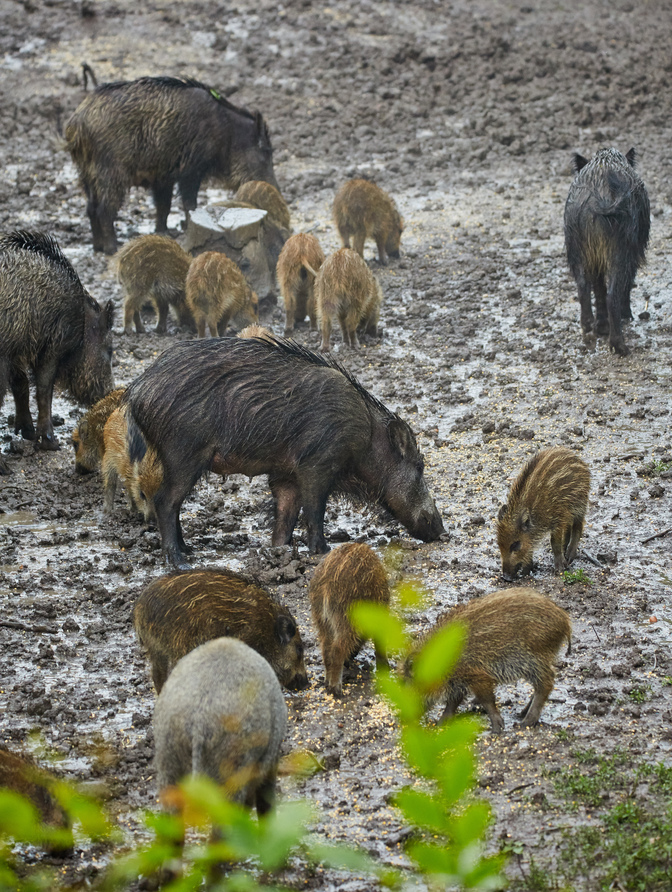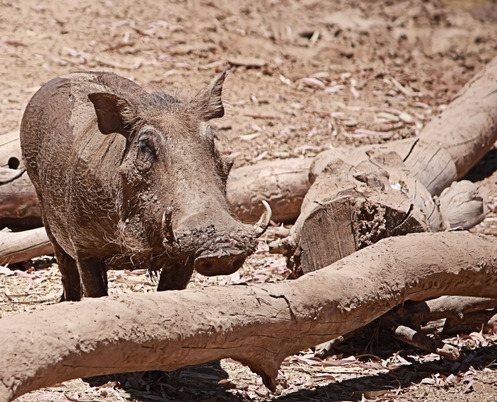A Way of Life in the USA
Hunting is a way of life in the United States, and we are here to help you be as successful on the hunt as possible.
Best States in the US to go Hog Hunting
 Hog hunting is growing rapidly throughout the United States for good reason. Particularly because of the continual growth in the population of invasive beasts and because these beasts have caused a widespread transmission of harmful diseases as well as damage to crops. Luckily for hunters in the country, the rapid growth of invasive animals have created many opportunities for hunting. Meaning, there is no reason not to go after a few hogs.
Hog hunting is growing rapidly throughout the United States for good reason. Particularly because of the continual growth in the population of invasive beasts and because these beasts have caused a widespread transmission of harmful diseases as well as damage to crops. Luckily for hunters in the country, the rapid growth of invasive animals have created many opportunities for hunting. Meaning, there is no reason not to go after a few hogs.
Hogs are prolific breeders that live in places which are typically not easy to get to. They can also be difficult to approach (any animal with ears the size of a catalpa tree leaf and a nose as big as a quart jar is likely not to be a pushover). However, there has been a pig boom that has resulted in relaxed hunting restrictions. Even on privately owned lands.
Because of this, most landowners (whether farmers or paper companies) may allow hunters enter their property provided the hunter brings forth a written and signed permit. Whether you are an avid hog hunter who is looking for new ways to hunt or you just want to hunt as it is something you enjoy doing, below are some of the best states for hog hunting.
1. Alabama
There are 17 wildlife management areas in the region that are currently in support of wild pig hunting. In southwest Alabama, you can find the best opportunities in the Upper Delta, W.L. Holland wildlife, and the Mobile-Tensaw Delta management areas. Rob M. Boykin and Scotch, Frank W. wildlife management areas have smaller populations.
The southeast part of Alabama is home to small hog populations on Covington and Blue Springs wildlife management areas. Farther down the north, the Lowndes wildlife management area south of Montgomery is a good option. The Seven-mile Island, Freedom Hills, and the Black Warrior wildlife management areas are top hog hunting spots in the northwest region of the state. Finally in the northeast, you can check out Little River, James D. Martin-Skyline, and Choccolocco wildlife management areas.
2. Florida
Every part of Florida boasts a reasonable hog population. Private land hunters can kill hogs any way they like. Public land hog chasers may need to provide a permit or fulfill some licensing requirements. On wildlife management areas, hog hunting is restricted to certain seasons. There are quality spots for hog hunting on Uncle Sam’s ground. Apalachicola wildlife management area in Franklin, Liberty, Wakulla and Leon counties is a part of the Apalachicola National Forest and offers a good area for hog hunting.
The Apalachicola Bradwell Unit along the Ochlockonee River is home to old-fashioned Hog Management Still Hunts and Hog Management Dog Hunts on selected weekends from the month of May through September. To hunt there, hog chasers will have to provide a quota hunt permit. Another popular destination for hunting hogs in the state is the Aucilla wildlife management area in Taylor and Jefferson counties. Florida is blessed with millions of acres of federally managed land, or paper company land, public hunting land and wildlife management areas; that is home to fair numbers of hogs.
3. Missouri
Though largely regarded for trophy bucks, Missouri is a great hog hunting area in the Midwest. There are no special permits required (except on deer and turkey seasons). Many counties across the region have a broad hog population, but the best areas for success when it comes to pig chasing is the southern part of the state (particularly along the waterways). The more active hog populations are the Devil’s and Ozarks Backbone Wilderness area.
4. Georgia
Georgia is one state that should be on every hog hunters radar. There is no closed season on the private lands, no limits and you can hunt pigs at night. Though public land (on national or state forests, as well as wildlife management areas) hunters face stricter regulations, there are still opportunities available for the non-residents (they must present a valid hunting license. If a landowner gives a non-resident permission to hunt hogs on his/her land, the traveling hog hunter can chase hogs at night or hunt them with any firearm type or archery equipment. But during special seasons, the archery equipment and firearms used to hunt hogs have to correspond with the stipulated regulations.
There are dozens of wildlife management areas in the state that support hog hunting. The majority of them are in the southern part at the major river bottoms like the Chattahoochee, Flint, Oconee and Ocmulgee. River Bend, Big Hammock, and Beaverdam wildlife management areas are ideal spots. The wildlife management areas in the delta regions of the southeast coast like Altamaha, Clayhole Swamp, and Paulk’s Pasture are all good places. The private holdings at the Okefenokee National Wildlife Refuge and anywhere around both sides of the Georgia and Florida state lines have many hogs too.
5. Oklahoma
 It is believed that every county in the state of Oklahoma is home to a population of feral hogs. License requirements may vary in the state (depending on the particular time of year) whether the hog hunting is going to be done on private or public land. The Honobia-Three Rivers wildlife management area that covers the Upper Mountain Fork, Eagle and Glover Fork rivers in the southeastern region of the state is an ideal open hog hunting spot for the public. Its 930,000 acres (encompasses the Ouachita National Forest, and some timber company land) is home to a sizable number of wild hogs.
It is believed that every county in the state of Oklahoma is home to a population of feral hogs. License requirements may vary in the state (depending on the particular time of year) whether the hog hunting is going to be done on private or public land. The Honobia-Three Rivers wildlife management area that covers the Upper Mountain Fork, Eagle and Glover Fork rivers in the southeastern region of the state is an ideal open hog hunting spot for the public. Its 930,000 acres (encompasses the Ouachita National Forest, and some timber company land) is home to a sizable number of wild hogs.
Hunters do not need to have a license to hunt hogs on private land all the time, but if they want to hunt during the big-game season, they will need a license. Feral hogs are a problem in Oklahoma to the point that the state’s Department of Agriculture keeps a directory of trappers and hunters that landowners can reach to help get rid of the nuisance. The chances that farmers with hog troubles in Oklahoma will allow you hunt for free are on the high side.
6. Tennessee
Originally, Russian boars were let loose in a few counties in the eastern part of Tennessee as game animals on private land. Today, around 80 of 95 counties in the state have wild hogs, the majority of which are good old-fashioned Durocs, Poland Chinas and Hampshires. They outgrew their welcome in 2011 after losing their status as game animals.
Feral hogs can be found in the swamplands surrounding Reelfoot Lake, the bottomlands of Mississippi, the Lands between the lakes, eastward to the Smoky Mountains and the Tennessee River Valley. Farmers are granted leeway to kill hogs on their property, which includes allowing hunters to help them. Hogs can be hunted on wildlife management areas during the deer season or on private land all year-round in Tennessee.
7. Texas
One premier destination for hunters looking to hunt feral hogs is the Lone Star State of Texas. Seeton as an exotic animal in the state, wild hogs can be subjected to state bag limits, closed seasons and possession limits, provided you are hunting on a private land. In other words, the state of Texas offers traveling hog hunters an opportunity to hunt pigs any time of the year. It is believed that the state’s hog population is as a result of the introduction of pigs three centuries ago by Spanish explorers (three centuries is plenty of time to reproduce and spread). Today’s population of hogs numbers in the region of millions and covers just about all of Texas.
The ranches and private lands that are overrun by hogs (particularly in the southern part of Texas) are reserved typically for fee hunting. If you are close to the croplands in the major river valleys like the Canadian, Red and the Sabine, seek a farmer permission for access. Additionally, you need a valid hunting license to enjoy bag limits or closed season. Hog hunters are welcome in the North Texas counties of Childress, Cottle, Briscoe, Hall and Motley. Hog hunters can also try regions like the Matador wildlife management area in Cottle County and the Caddo Lakes wildlife management area in Harrison and Marion counties. Another ideal option includes the walk-in hunts that are administered by Texas Parks and Wildlife.
8. California
While famously known for being the base of Hollywood the Golden State of California offers hog hunters many opportunities. In fact, hunters are likely to find hog hunting opportunities that can rival all the other states in the country. Hog hunters will need to acquire hunting licenses, individual pig permits, before selecting a good area to hunt in the region. Although California is thick with game baiting is prohibited, hunting only boils down to spotting and staking or stalking out agricultural food sources and waterholes.
Most hog hunters feel the best way to kill hogs is sitting next to the feeder and waiting for the animal to turn up, however, since bating is prohibited spotting some pigs rooting through a field of barley and attempting to crawl to bow range is an ideal method for hunting. The counties in the state are great sites for hog hunting as the region has a sizable hog population in both private and controlled public lands. Hog hunting is excellent in California.
